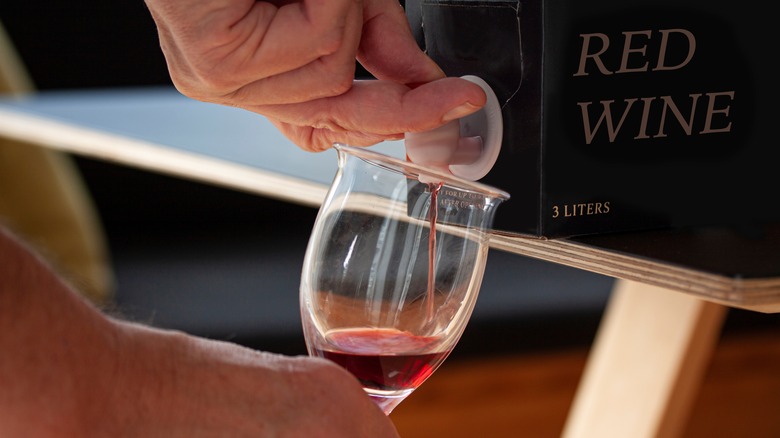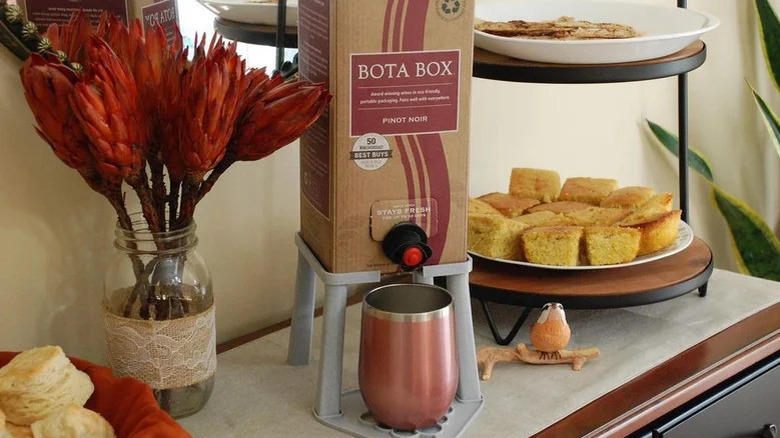The Origins Of Boxed Wine Trace Back To 20th Century Australia
For poor American college students and young adults, boxed wine is almost as familiar as a case of Bud Light, but it's actually a pretty recent creation. In the United States, boxed wine first took off in the '80s, when other bottom-shelf drinks like wine coolers and jugs of wine were also at the peak of their popularity. This was the time when Franzia took over the boxed wine world that it would end up dominating for decades. The company is so associated with the product that you'd be forgiven for thinking it invented it, and it's only in recent years that some winemakers have started selling higher quality boxed wine to help save it from the bargain brand association. But Franzia was only piggybacking on the success boxed wine had in its home country a decade prior, when it took over Australia.
While the bag-in-box wine concept was created in Australia, the story does actually start in the U.S. in a very unexpected place. In the 1950s, a family named Sholle developed the bag-in-box packaging system for a substance only slightly more corrosive than cheap wine: battery acid. Around the same time, there was a vineyard in South Australia called Angove Family Winemakers, run by Thomas Angove. He was frustrated with glass as the primary way to transport wine, reportedly because the wine would eventually go bad and because of how fragile it was. So Angove started looking around for a solution to his problem with wine bottles.
Boxed wine was a sensation in 1970s Australia
Angove himself conceived of wine in a bag after being inspired by shepherds who would drink their wine from goatskin flasks, but it took time for his idea to become what we know today. The wine was poured through a spout, and it had to be sealed shut after opening with a peg or paperclip. Others saw the potential, and another wine company, Penfolds, worked with an Australian inventor named Charles Malpas to develop a tap for the bag. Penfolds wasn't using a box, it used a tin, but all the elements for boxed wine were now in place. Once wine-in-a-bag started taking off in the country, winemakers discovered the American bag-in-a-box storage method, and shifted over to that technology, which became and remained the standard to this day.
Prior to boxed wine, the expensive drink had been a relatively unpopular special occasion treat in Australia. But the new form took off, partly due to its affordable price, and boxed wine became ½ of the Australian market in the '70s, and by the '80s when it made the jump to America, it was ⅔. Box wine has remained iconic down under, even as its popularity has waxed and waned elsewhere. As boxed wine pushes to evolve for modern tastes, cost conscious consumers should keep it in mind — you can even cook with boxed wine — and remember to thank Australia for their affordable glass of vino.

